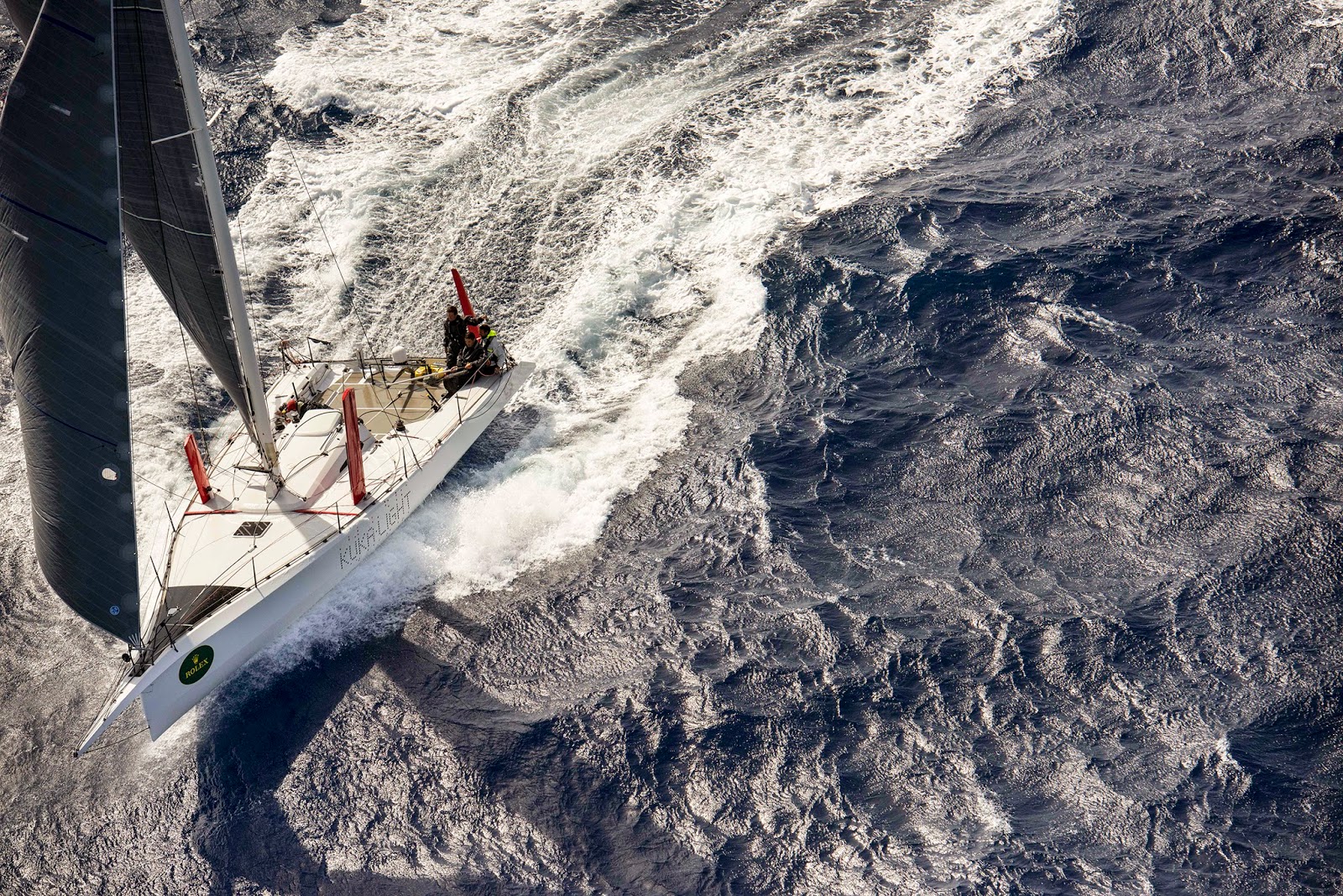PROJECT KUKA-LIGHT. THE BEST CHALLENGE EVER
Kuka Light is a high-end race design and started with a simple parameter: to be lightest possible monohull around 12 m that could compete in Rolex Middle Sea Race, Rolex Fastnet, and other 600 nm offshore courses.
The initial discussions centered on weight and what “no rules” really means. The IMOCA 60’s were often used as a reference. It was decided that achieving Design Category A for the purposes of CE/ISO certification and ISAF OSR Category 1 was appropriate. This would make the boat a proper ocean racer, just a level below the deep trans-ocean racing of the IMOCA’s.
The power to weight of the canting keel proved unbeatable with technology today, for the regattas in question. The efficiency of the rotating wing mast, enhanced by a boat that would sail more like a catamaran than like a fixed keel mono, was too attractive to be ignored.
To get the lowest possible weight of the primary hull and deck laminates and unprecedented approach was taken. We decided to build the port and starboard sides, the central hull, and the deckhouse and cockpit each in the largest diameter autoclave available to us. This gives access to huge pressures during cure and allows one to choose prepreg’s with far higher fibre to resin ratios than is normally possible. The weight savings were unattainable any other way. The bowsprit, foils, and mast would also be produced in this same hi-tech process.
At a few crucial stages during the design and build process we have been challenged to get the most out of the decision to be made. One example of this would be the CFD research undertaken in the phase were the hull shape was being finalized. It may have cost some weeks, but we could never win back those gains at a later date. The primary focus was how hard the boat could be driven. Deck immersion in waves was considered to be a crucial factor. If it was possible to reduce deck immersion and heeled drag at the same time, all the better. In the end, this study showed the value of rocker, as much as it did volume distribution forward of the mast.
As it stands, if Kuka were an IMOCA 60, it would be 15% lighter than the nearest competitor. There is nothing like it on the race course. It is wide for its length, 4.6 m wide for 12.7 m LOA. It has a considerable sprit and an upwind sailplan almost exactly the same as a Class 40, at a fraction of the lightship weight. Kuka has been a unique project, the best challenge we have been presented with to date.


